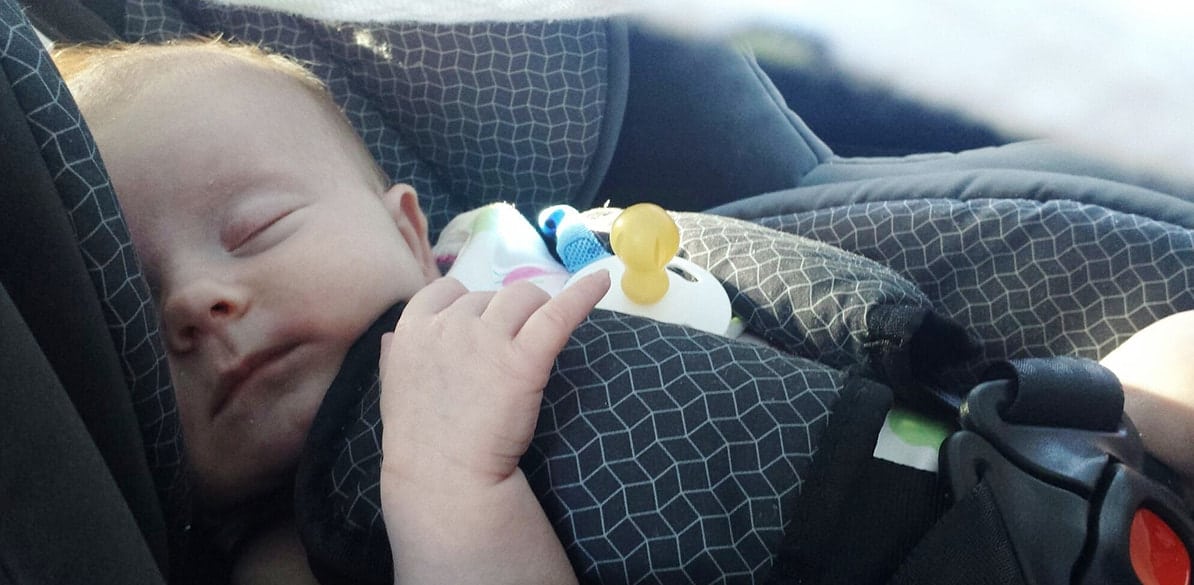Transporting a premature baby in the car

Seguridad Vial
As we have seen before, it is a legal requirement to use a child restraint system (CRS) to provide infants with the utmost safety. Even if the infant is very small, you should NEVER hold it in your arms or without a child restraint system in vehicles, as in the event of sudden braking or an accident there is a very high likelihood of it being crushed or sustaining serious injuries.
How to seat infants
The first thing to do is ask the baby’s maternity nurse or pediatrician if it is necessary to take any kind of special precautions when traveling by car. Specifically, you need to ask whether the infant should travel lying down in an approved carrycot or if it can use a child seat, egg stroller or Maxi-Cosi for babies, whereby the infant is in a semi-reclining position facing backwards.
Next, it is important to ascertain that the child seat is correctly positioned and firmly affixed to the car. Usually you use either the car’s own seat belts to affix the child seat to the seat or the ISOFIX fast-fix system. In the first case, i.e. the vehicle’s seat belt, you should follow all the instructions of the child seat manufacturer and make sure that the seat belt never comes into contact with the baby, as it is still too young to withstand the pulling and chafing these can cause.
To seat the baby in a child seat that faces backwards, you should make sure that their butts are comfortably fitted into the back of the seat so that the baby’s entire back is firmly supported by the seatback, with no risk of slipping. This means that the protective features of the child seat (above the shoulders, on both sides and between the legs) will not disturb the infant.
The next step is to correctly fasten the different safety belts, straps and harnesses of the child seat (the ones that secure the baby in its carrycot or child seat). Normally these have one or two buckles or clasps at chest and waist level. To close the buckle properly, you should refer to the instruction manual or even practice a few times before you seat the baby. This step is also extremely important, given that the belts and straps will hardly be of much use if the buckles are not fastened properly. The baby must not be left unsecured in the seat, so it is necessary to adjust the belt or harness as closely as possible to its body, obviously without making it excessively tight or restricting the child’s breathing. A good way of measuring the correct adjustment is by putting two fingers between the baby and the belt or harness: if your fingers go in easily, you need to tighten the straps a little more.
Breathing difficulties
The biggest risk in the case of premature babies is breathing difficulties – for example, the appearance of apneas, which can lead to bradycardia, hypoxemia or breathing failure. Apneas are small breathing stops of at least 20 seconds, and depending on their frequency and duration they can pose a serious risk to the child’s health.
Putting a baby in a backwards-facing seat with an overly vertical seatback can increase the risk of respiratory problems in babies. On the other hand, a seat facing away from the direction of the vehicle helps considerably to protect the baby’s head and neck in the event of a head-on collision. Our advice in these cases is to always ask your pediatrician how to travel safely with a premature baby (either lying down in a carrycot or semi-reclining in a backwards-facing child seat or Maxi-Cosi), and you should also abide by the precautions given in the instructions of the manufacturer of the child restraint system.
Fundación MAPFRE recommends you consult your pediatrician if your baby has breathing difficulties. If the child does not have any breathing issues, and provided this is confirmed by the pediatrician, it is best to position the child seat facing backwards, while if there is any risk the best thing is to get one of the new state-of-the-art carrycots in which the child can lie flat.
At the end of the day, the most important thing is your baby’s safety, and knowing how to adjsut the mechanisms and devices to each infant’s individual circumstances. In addition, in the case of premature babies, it is essential that you always follow the recommendations of your pediatrician.
